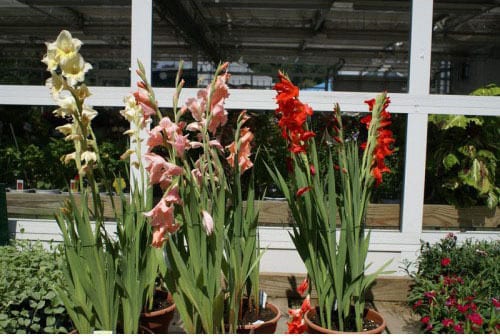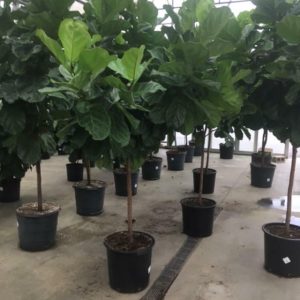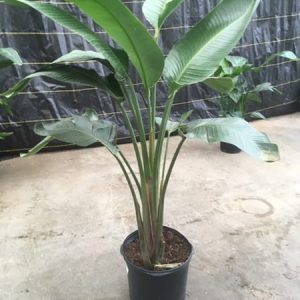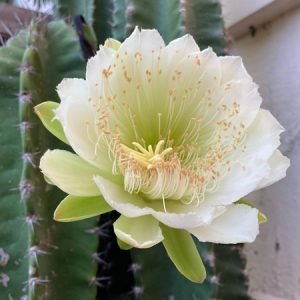Description
Gladioulias
perennial
comes in 1 or 2 gallon pots
Gladiolus – Acidanthera – Homoglossum –
There are about 180 species of cormous perennial, and 1,000’s of cultivars, in this genus. They occur in rocky slopes, seasonally dry grasslands, and marshy areas, mainly in South Africa, but also from the Mediterranean, the Arabian Peninsula, Northwestern and Eastern Africa, Madagascar, and Western Asia. They are grown for their showy spikes of usually open, funnel shaped flowers, borne mainly from spring to early autumn. The flowers each have 6 tepals: usually 1 central upper tepal, 3 often quite small lower or lip tepals, and 2 side, or wing, tepals. They are carried side by side, or one above another and open from the bottom of the spikes upward, older blooms dying off as new ones develop (the number of buds open at any one time is given in parentheses in each cultivar description below).Erect leaves, borne in basal fans, are narrow, linear or sword shaped, mid to dark green, and 10-36″ long. Plant in this genus vary greatly from very small and sometimes fragrant species to the spectacular, colorful spike of the florists gladiolus.
There are 3 main hybrid group are the Grandiflorus (bloom in late spring to early autumn and are regarded as to demanding), the Primulinus group (bloom early to late summer and is a hybrid group), and the Nanus (or Butterfly) group (blooms in early summer).The flower sizes are divided into the 5 following categories:
Giant: are 5 ½” across or more
Large: are 4 ½-5 ½” across
Medium: are 3 ½- 4 ½” across
Small: are 2 ½- 3 ½” across
Miniatures: under 2 ½” across
Grow in fertile, well drained soil in full sun to partial shade, planting the corms 4″ deep, and 3-6″ apart in spring. For gladioli left in the ground, apply a high-potash liquid fertilizer when the flower spikes reach 1/3to1/2 their final height repeat every 10-14 days until 3 weeks after flowering. Gladioli are hardy wherever the soil does not freeze deeply in winter, generally from Zones 8-10.Protect with a thick, loose mulch or plant near a warm wall to extend hardiness, in some cases to zones 6.Tall stems may need staking. Lift corms over winter in cold climates, store when perfectly dry.
zones 8-11





